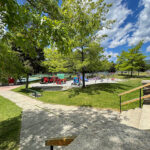Home »

Vote ‘yes’ for democracy
By Joyce Green
Op-Ed Commentary
As we approach B.C.’s referendum this fall on changing the electoral system from the “first past the post” (FPTP) to a Proportional Representation (PR) system, the Ontario election offers us a useful example of the democratic limitations of FPTP.
The Ontario election produced a landslide for the PCs with 76 seats and 40.76% of the popular vote; the NDP won 40 seats with 33.69% of the popular vote; the Liberals won seven seats with 19% of the popular vote; the Greens won one with 4.62% of the popular vote.
Based on the 124 seats up for grabs in Queen’s Park, on my math, under Proportional Representation the PCs would hold 50 or 51 seats; the NDP, 41 or 42; the Libs, 23 or 24; and the Greens, five or six seats. PR produces elected seats reflecting the vote share of parties.
As PR activist Ann Remnant of Nelson puts it, “If the purple party gets 17% of the vote, it gets 17% of the seats.” The result would be a very different looking Legislature, with much stronger democratic credentials and representation.
Now that B.C. Attorney-General David Eby has announced the electoral referendum question, British Columbians can think about precisely what the issues are and plan their choices accordingly.
The government held consultations involving 91,000 participants, leading to the questions on the ballot. Voters will choose between the status quo – the plurality or “first past the post” system that produces false majorities (a majority of seats with a relative minority of the popular vote) – or a form of proportional representation that produces seats in the same proportion as a party’s share of the popular vote.
The ballot is a two-part question, allowing B.C. voters to choose between PR and the old system, and to also choose from three made-for-BC models of PR.
The change will not produce a significant increase in the size of the legislature. The government also promised that no region of the province will have fewer MLAs than it currently has; and importantly, no political party will receive a seat if it gets less than five per cent of the overall vote in the province or region. This avoids the potential problem of weak voices or fringe interests in the Legislature.
Fair Vote Canada BC, a multi-partisan citizens group advocating for proportional representation, supports the government’s process. It is also pleased that regulations ban big money from the referendum. All the systems on the ballot would deliver strong local representation, more voter choice, fairer results and more cooperative politics. All models are easy for voters to use. This is one of those rare instances where fundamental change is easy, positive, comprehensible, and affordable. A positive result will strengthen the democratic quality of our elections.
Fair Vote Canada – Cranbrook endorses the proposed ballot and urges citizens to vote in favour of proportional representation.
Those wishing to may sign onto Fair Vote’s pledge to support PR HERE.
– Joyce Green, Fair Vote Canada – Cranbrook







